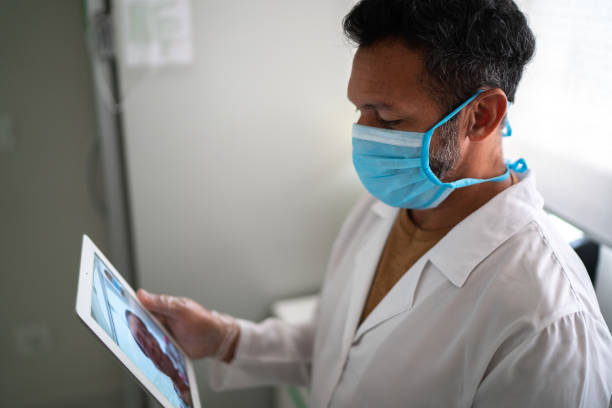Choosing the Right Remote Patient Monitoring System: A Comprehensive Guide
The landscape of healthcare is undergoing a profound transformation, and at the heart of this change is the adoption of remote patient monitoring solutions. These innovative technologies are reshaping patient care, offering a host of benefits over traditional patient care methods. This comprehensive guide will delve into the essential factors to consider when choosing the right remote patient monitoring system and how it differs from traditional patient care.
Remote Patient Monitoring Solutions: A Healthcare Revolution
Remote patient monitoring solutions represent a paradigm shift in healthcare, encompassing a wide range of technologies and services designed to remotely monitor patients' health data. This innovative approach is revolutionizing how healthcare is delivered, providing numerous advantages for patients and healthcare professionals.
Traditional Patient Care vs. Remote Patient Monitoring
Enhanced Patient Care: Remote patient monitoring solutions are changing the face of patient care. They provide continuous monitoring of vital health metrics, enabling early detection of health issues and timely interventions, something traditional patient care cannot achieve as effectively.
Personalized Treatment: In remote patient monitoring, personalization is key. These solutions facilitate the creation of individualized care plans tailored to each patient's specific health needs and goals, a level of personalization that is challenging to achieve in traditional patient care settings.
Real-time Insights: Remote monitoring solutions offer real-time insights into a patient's health status, allowing healthcare providers to make informed decisions and provide proactive interventions, a capability that is often lacking in traditional patient care.
Improved Outcomes: By actively engaging patients in their care and enabling early interventions, remote monitoring often leads to improved health outcomes compared to traditional patient care methods.
Factors to Consider When Choosing a Remote Patient Monitoring System
Compatibility: Ensure that the remote patient monitoring system is compatible with your existing healthcare infrastructure, including electronic health record (EHR) systems and other relevant technologies.
Scalability: Consider the scalability of the system. It should be able to accommodate a growing number of patients and healthcare providers as your practice expands.
Data Security and Privacy
HIPAA Compliance: Verify that the system adheres to the Health Insurance Portability and Accountability Act (HIPAA) to ensure the security and privacy of patient data.
Data Encryption: Ensure that data transmitted and stored by the system is encrypted to protect patient information from unauthorized access.
User-Friendliness
Ease of Use: The system should be user-friendly, with an intuitive interface that healthcare providers and patients can navigate without extensive training.
Accessibility: It should be accessible across various devices, including smartphones, tablets, and desktop computers, to accommodate both healthcare providers and patients.
Range of Health Metrics
Comprehensive Monitoring: Consider the range of health metrics the system can monitor. A robust system should cover a wide spectrum of vital signs and health parameters.
Customization: It should allow for customization to tailor monitoring to individual patient needs, ensuring that it meets the unique requirements of each patient.
Advantages of Remote Patient Monitoring
Early Detection: Remote patient monitoring allows for the early detection of health issues, enabling healthcare providers to intervene promptly.
Reduced Hospitalizations: Timely interventions often reduce hospitalizations, resulting in cost savings and improved patient outcomes.
Patient Empowerment
Engagement: Patients become active participants in their healthcare journey, gaining access to their health data and educational resources that empower them to make informed decisions about their health.
Improved Adherence: Remote monitoring solutions assist in medication management, ensuring patients adhere to their prescribed regimens.
AI Integration
Advanced Data Analysis: Artificial intelligence (AI) will play an increasingly significant role in remote patient monitoring, providing healthcare providers with enhanced data analysis capabilities for more accurate diagnosis and treatment planning.
Predictive Tools: AI-powered predictive tools will enable healthcare providers to anticipate health issues and provide proactive interventions.
Telehealth Integration
Seamless Integration: Telehealth services will become more seamlessly integrated with remote patient monitoring, offering patients a comprehensive and convenient approach to managing their health.
Convenience: Patients will benefit from the convenience of remote consultations with healthcare providers, reducing the need for in-person visits.
Conclusion:
Choosing the right remote patient monitoring system is a critical decision that can significantly impact the quality of patient care. Embrace the future of healthcare by adopting a remote patient monitoring system that aligns with your practice's needs and priorities. Consider partnering with Global Touch LLC to navigate this transformative journey successfully. Make the switch to remote patient monitoring and experience a new era of healthcare that prioritizes patient engagement, timely interventions, and improved outcomes.




Comments
Post a Comment